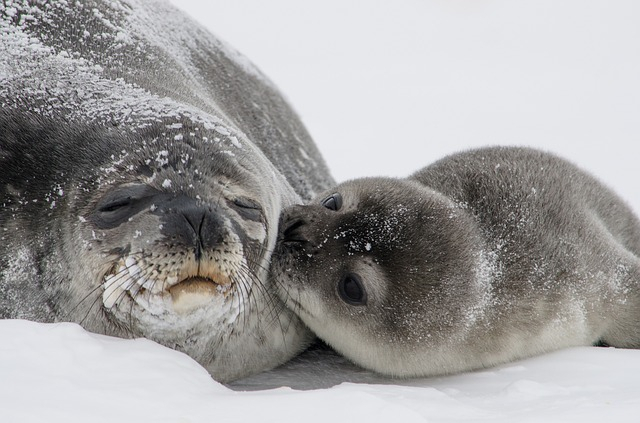
Loss of ice in the Arctic sea may be linked with the spread of a deadly virus responsible for killing thousands of European harbor seals in the North Atlantic in 2002, which is now infecting seals, otters and many other marine mammals across the world, a report has suggested.
According to a new study, the spread of the phocine distemper virus (PDV) -- the seal equivalent of measles – is the cause for a disease affecting the brain and lungs of marine species, leading to the death of many more harbor seals since the virus for the first time crossed the Arctic in 2003.
Tracey Goldstein from the University of California concluded that large mass mortality seen in harbor seals was because of the spread of PDV after she along with her team collected blood and nasal swab samples from over 2,500 sea otters, sea lions and various seal species in the north Pacific between 2001 and 2016 and tested them for the virus.
The team used satellite images to assess the presence of open water routes through the Arctic Ocean due to melting sea ice over the same period to allow infection relatively common in parts of the Atlantic to reach the Pacific. The major peaks in virus infection in north Pacific otters, sea lions, and seals between 2003 and 2009 is associated with the presence of a route through melted Arctic sea ice in the preceding years.
According to James Wellehan from the University of Florida, climate change is spreading PDV and leading to the loss of entire species. "When you have a planet that is undergoing massive change like this, and we're damaging their food sources with overfishing, all of this just adds up to more pressure against the species," she explained in the journal Scientific Reports.
The pathogen responsible for killing about 30,000 European harbor seals in the North Atlantic in 2002 also infected northern sea otters in Alaska in 2004. Goldstein said the loss of sea ice was leading marine wildlife to seek and forage in new habitats and was removing the physical barrier that allowed new pathways for them to move.
She said animals carried opportunities to introduce new infectious diseases with potentially devastating impacts as they moved and came in contact with other species. The ice in the Arctic sea covered about 2.7 million square miles in 1979, but the extent by the last month had dropped to 1.7 million square miles, according to the European Space Agency, which warned the world could see the ice-free Arctic in just decades.
Less sea ice means more open ocean pathways crisscrossing the Arctic. Ships take advantage of these routes, including Canada's Northwest Passage, to cut travel time, but the pathways are also used by marine mammals to bop between oceans, increasing their chances of infecting with the deadly virus across different regions.
Goldstein, however, said there was a little possibility of PDV-positive mammals found along eastern Russia traveling to tropical waters and spreading the virus to Southeast Asian region as Pinnipeds, a category of animals that includes seals and walruses, prefer cooler seas.
According to lead author Elizabeth VanWormer, a postdoctoral researcher at UC Davis and now an assistant professor at the University of Nebraska, said there was no evidence to suggest that phocine distemper virus-infected humans, but added the virus belonged to the same family as the measles. She added the virus might spread among the animals when they gathered to nest and breed or fed in close proximity.









